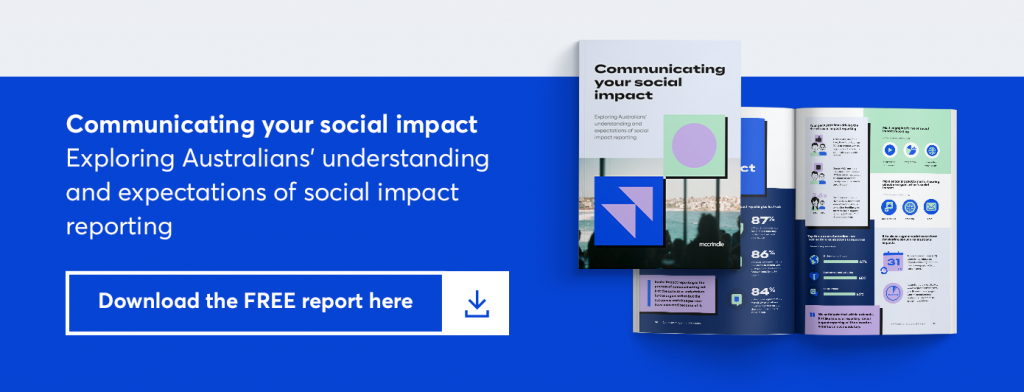
By: McCrindle
With so many charities in the NFP sector, it can feel like a saturated market. Especially with so many other outlets seeking attention, it’s important to make sure you are doing something different and sharing your unique story in a way that engages an audience.
Many organisations benefit from being the leader in their sector by telling their story in unique and compelling ways that build trust and increase engagement. Which ultimately brings about advocacy of their cause. So, how do you become a leader in a unique sphere? And how do you go about getting the engagement you need?
Tell your story
For many, it helps by starting by telling your story. But not in the usual way. As social researchers, we find that the best way to tell a story is through research and data. This gives an organisation credibility that builds trust and in many ways increases engagement because it brings the story to life. This might be done by looking at key milestones and the data associated or surveying communities to get an accurate view of how an organisation has impacted people. Telling your story allows you to connect with people and give them insight into what you do.
Utilise visual reports
You can differentiate your brand by producing visual reports that tell your story and will resonate with a variety of stakeholders. This is done by collecting data on your impact and communicating the insights in visually engaging ways. This establishes you as a leader, increases engagement and is also useful for public advocacy.

Here are some of our favourite examples of visually engaging reporting:
- The Foodbank Hunger Report supported Foodbank in their mission to increase awareness of the food insecurity issue in Australia. The report was addressed in the media and by government, sparking public conversations about this important issue.
- HOPE Housing engaged McCrindle to create an infographic for the purpose of sharing their social impact story with potential investors and partners.
These examples highlight the value in identifying what your organisation does differently from others, creating a story using visuals and then building your brand around it. Once you have your niche, own it!
Create engaging content that resonates with different audiences
Getting started on this journey is about creating content that is relevant, useful and resonates with your audience. Content comes in all different shapes and sizes: reports, blogs, animated videos and infographics are all examples of this. The content that you produce should be a combination of the following:
• Relevant – the content should relate to what your audience want to hear about and the metrics they care about. For example, environmental reporting, staff wellbeing and social impact are key areas people are looking for reporting on.
• Useful – it should add value to your audience. People like transparent organisations that show how they operate and make an impact. This is a great opportunity to teach something or answer questions about what you do.
• Entertaining – not all content has to be overly serious, you can provide entertainment value too! Whether this is through videos from company events, showing how you help communities, or visual reports/infographics that are accompanied by engaging graphs or charts. As an example, we included the number of cakes eaten by our team as a fun way of showing our culture in our McCrindle annual impact report .
• Authoritative – this will help position your organisation as a champion of your cause. People will come back for more information because of the quality of material you put out there. Robust research is core to doing this well.
Share your social impact across multiple channels
To maximise your content’s visibility, take a multi-channel approach. To do this, you need to be able to answer a few questions:
• How do you plan on promoting your social impact across your organisation’s channels? (e.g., emails, social media, print)
• What are the best ways to engage each audience group?
• How will you measure engagement for each channel?
• Where is your audience most likely to engage with your content?
Develop an innovative communications strategy to take your brand from follower to leader within the NFP sector
Your organisation is just one of hundreds competing for the attention of donors. You want to stand out but, more importantly, you want to serve your community.
A successful communications strategy, which includes gathering your data and communicating your impact will help to differentiate your brand from competitors and build a reputation as a leader in your NFP niche.
For more information on how you can position your organisation as a thought leader, download our free report on how you can communicate your social impact.
Article supplied with thanks to McCrindle.
About the Author: McCrindle are a team of researchers and communications specialists who discover insights, and tell the story of Australians – what we do, and who we are.
Feature image: Photo by KOBU Agency on Unsplash













